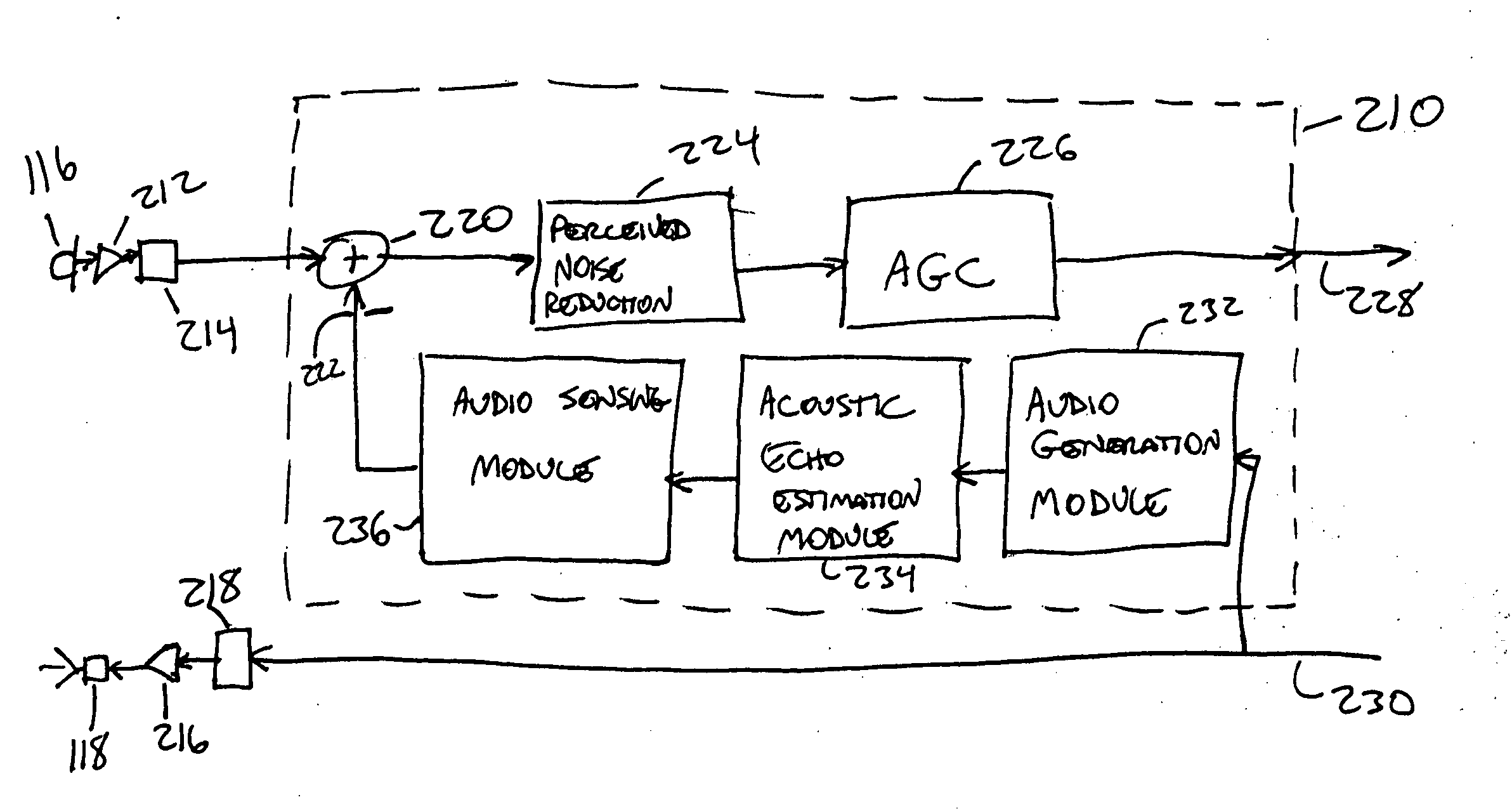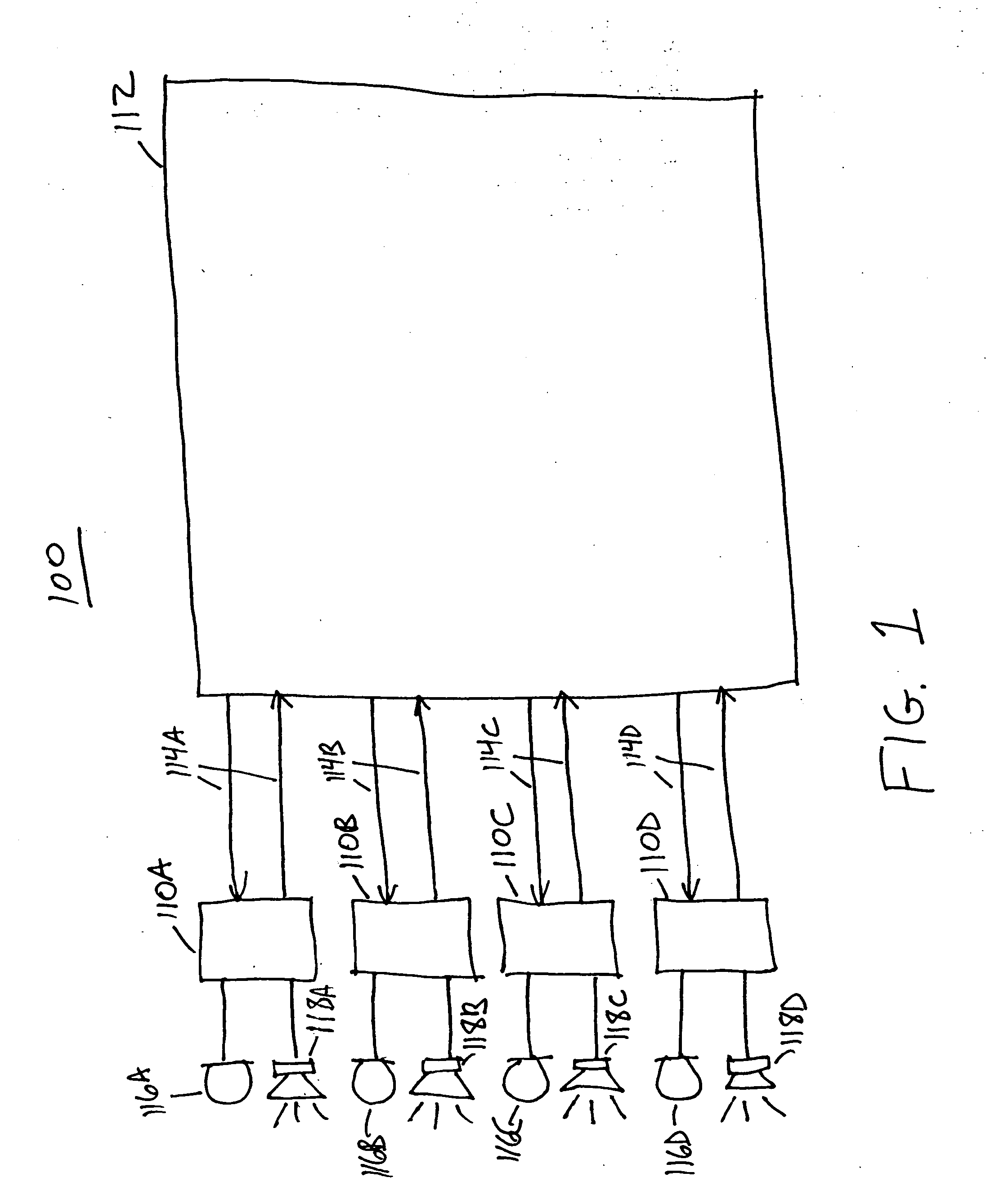Distortion compensation in an acoustic echo canceler
a technology of distortion compensation and canceller, which is applied in the field of telephony and televideo conferencing, can solve the problems of many inherent in half-duplex systems, remote terminals hearing echoes, and loudspeakers emitting undesirable sounds
- Summary
- Abstract
- Description
- Claims
- Application Information
AI Technical Summary
Problems solved by technology
Method used
Image
Examples
Embodiment Construction
[0023]FIG. 1 is a high-level block diagram of an audio communications system 100 according to an embodiment of the present invention. A plurality of terminals 110A-D are coupled to a switch 112 via communications links 114A-D. The terminal types can be heterogeneous or homogeneous. In one embodiment, the terminals include: dedicated speakerphones, desktop handsets with or without speakerphone capabilities, cellular phones, and / or personal computer (PC) systems with audio capabilities. As used herein, the phrase “audio communications system” also includes video conferencing systems having audio capabilities. Each terminal 110, of which terminal 110A is representative, preferably includes a microphone 116A and a loudspeaker 118A. As is known in the art, the microphone 116 converts sound pressure waves into electrical signals and the loudspeaker 118 converts electrical signals into sound pressure waves.
[0024] The communications links 114 carry audio data representative of sounds picke...
PUM
 Login to View More
Login to View More Abstract
Description
Claims
Application Information
 Login to View More
Login to View More - R&D
- Intellectual Property
- Life Sciences
- Materials
- Tech Scout
- Unparalleled Data Quality
- Higher Quality Content
- 60% Fewer Hallucinations
Browse by: Latest US Patents, China's latest patents, Technical Efficacy Thesaurus, Application Domain, Technology Topic, Popular Technical Reports.
© 2025 PatSnap. All rights reserved.Legal|Privacy policy|Modern Slavery Act Transparency Statement|Sitemap|About US| Contact US: help@patsnap.com



